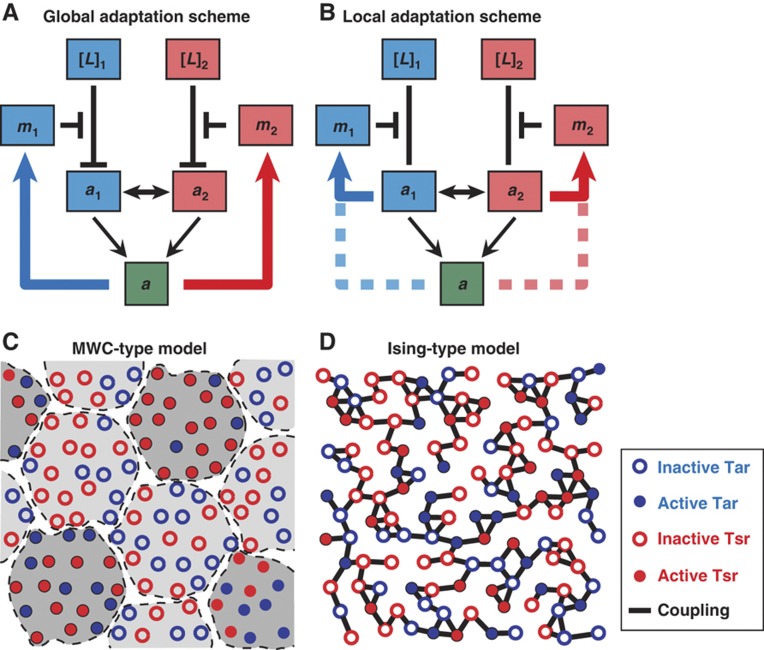Figure 1.
Illustration of the different models of receptor adaptation and receptor cooperativity. (A) The global adaptation model, in which the overall integrated activity a controls the methylation dynamics of individual receptor. [L]1(2) represents MeAsp (serine) concentration; m1(2) and a1(2) represent Tar (Tsr) methylation level and its local activity (conformational state). (B) The local adaptation model, in which the methytlation of individual receptor is controlled by its own conformational changes. (C) The MWC-type model for receptor cooperativity. The extended receptor cluster is divided into tightly coupled functional complex (large dashed circle), within which the receptors, Tar (blue circle) and Tsr (red circle), are synchronized to be either active (filled) or inactive (hollow). (D) The Ising-type model, in which neighboring receptors interact with a finite coupling strength to favor (but not absolutely enforce) same activities.

